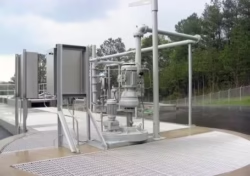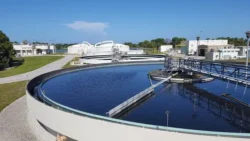
What Is Membrane Bioreactor Wastewater Treatment
Membrane Bioreactor Wastewater Treatment: Revolutionizing Water Purification
In an era where sustainability and environmental preservation are at the forefront of global concerns, innovative technologies like membrane bioreactor (MBR) wastewater treatment systems are reshaping how we manage and purify sewage effluents. MBRs represent an advanced solution to wastewater treatment, offering numerous benefits over traditional methods in terms of efficiency, quality of treatment, and environmental impact. This article delves into the intricacies of MBR technology, exploring its components, advantages, challenges, and future potential.
Introduction to Wastewater Treatment
Wastewater treatment is a critical process in the modern world, designed to eliminate contaminants from water to make it safe for release into the environment or for reuse. The treatment process typically involves several stages, including primary, secondary, and tertiary treatments, each aimed at reducing different types of pollutants such as sediment, organic matter, and nutrients.
Traditional systems like activated sludge processes have been used for decades. However, they have limitations in terms of space requirements, treatment efficiency, and operational stability. This is where membrane bioreactor technology enters the scene, offering a compact, efficient, and versatile solution.
What is a Membrane Bioreactor?
Definition and Components
A membrane bioreactor is a combination of a biological treatment process and membrane filtration. The core idea is to integrate a membrane process, such as microfiltration or ultrafiltration, with a suspended growth bioreactor. The MBR process is characterized by three main components:
-
- Bioreactor Tank: The heart of the MBR system, where biological degradation of organic matter occurs. Aerobic or anaerobic microorganisms break down pollutants in the wastewater.
-
- Membrane Filtration Unit: Consists of porous membranes that physically separate solids, bacteria, and other impurities from the water. This replaces traditional sedimentation used in conventional systems.
-
- Permeate or Treated Water: The clean water that passes through the membrane filters is referred to as permeate. It is nearly free from suspended solids and has a significantly reduced level of contaminants.
By amalgamating these components, MBR systems achieve higher levels of purification and allow for more compact and efficient plant designs.
Types of Membrane Bioreactors
Membrane bioreactors can be classified based on membrane configuration and operation mode:
-
- Side-stream MBRs: Membranes are located outside the bioreactor, and mixed liquor is pumped through them. While these systems can handle higher flows, they consume more energy.
Membrane Materials and Configurations
Membranes can be made from various materials, including polymeric (e.g., polyvinylidene fluoride, PVDF) and ceramic materials. These materials define characteristics like chemical resistance, durability, and fouling tendencies.
Common membrane configurations include:
-
- Flat sheet (FS) membranes: Easy to clean and replace, used primarily in submerged systems.
-
- Hollow fiber (HF) membranes: Offer a large surface area and higher flux rates, applicable in both submerged and side-stream systems.
-
- Tubular membranes: Found in side-stream designs, these can handle high solid concentrations and aggressive cleaning.
Advantages of MBR Technology
Improved Effluent Quality
One of the most significant benefits of MBR systems is their ability to produce an exceptionally high-quality effluent. The membrane barrier effectively removes suspended solids, bacteria, and even some viruses, resulting in water that is nearly free of contaminants. This quality often meets or exceeds regulatory standards for discharge or reuse, making MBR-treated water ideal for non-potable applications like irrigation or industrial processes.
Compact Footprint
Compared to conventional wastewater treatment plants, MBR systems require significantly less space. The combination of biological treatment and membrane filtration eliminates the need for large secondary clarifiers. This compact design is particularly advantageous in urban areas where land is scarce and expensive.
Higher Loading Rates and Stability
MBR systems can operate at higher mixed liquor suspended solids (MLSS) concentrations than conventional systems. This capability translates into higher biomass concentration and improved degradation efficiency. Additionally, MBRs demonstrate greater stability in treating variable loads and shock loads, maintaining consistent effluent quality under diverse operating conditions.
Enhanced Nutrient Removal
Advanced MBR designs incorporate processes for enhanced biological nutrient removal (BNR), making them suitable for treating wastewater with high nutrient content. The ability to integrate denitrification and phosphorous removal processes further improves the effluent quality.
Flexibility and Scalability
MBRs offer flexibility in design and operation. They can be easily scaled up or down, allowing for modular and phased expansions. This adaptability makes them ideal for both small-scale applications and large municipal systems, as they can grow alongside community needs.
Automation and Control
Modern MBR systems often incorporate advanced automation and monitoring controls. These systems enable real-time monitoring of system performance, early detection of membrane fouling, and automatic adjustments to operating parameters, reducing the need for manual intervention and optimizing efficiency.
Challenges and Considerations
Despite their numerous advantages, MBR systems come with a set of challenges and considerations that need to be addressed:
Membrane Fouling
Fouling is the accumulation of solids, biological materials, and chemical substances on membrane surfaces, which can lead to reduced permeability and increased operational costs. Effective fouling management is crucial for maintaining system efficiency, involving regular cleaning protocols and optimization of operating conditions.
Energy Consumption
MBR systems, especially side-stream configurations, can have high energy requirements due to aeration needs and membrane cross-flow. Energy efficiency improvement strategies, such as intermittent aeration or the use of energy-efficient blowers, are essential to minimize operational costs.
Capital and Operational Costs
The initial capital costs for MBR installations are typically higher than those of conventional systems, mainly due to membrane costs and advanced equipment. Operational costs can also be significant, driven by energy requirements, membrane replacement, and maintenance. However, these costs must be weighed against the benefits of improved effluent quality and reduced footprint.
Membrane Longevity and Replacement
The lifespan of membranes is a critical factor in the operational costs of MBR systems. Advancements in membrane materials and design continue to improve their longevity, but regular replacement is inevitable. Developing more durable and cost-effective membranes is a key area of ongoing research.
Sludge Handling
While MBR systems produce high-quality effluent, they also generate sludge that requires processing and disposal. Efficient sludge management and treatment strategies are necessary to ensure the overall sustainability of the system.
Applications of MBR Technology
Municipal Wastewater Treatment
MBR systems are increasingly being implemented in municipal wastewater treatment plants worldwide. Their ability to meet stringent effluent standards, along with the compact design, make them attractive solutions for cities facing water scarcity and stringent environmental regulations.
Industrial Wastewater Treatment
Industries producing complex and high-strength wastewaters, such as pharmaceuticals, chemicals, and food processing, benefit from the robustness of MBR systems. These systems can efficiently handle variable loads and remove a wide range of organic and inorganic contaminants.
Decentralized and On-site Systems
MBR technology is well-suited for decentralized wastewater treatment applications, such as small communities, resorts, and remote locations. The modular and scalable nature of MBRs allows for customized solutions that can be tailored to specific needs and conditions.
Water Reuse and Recycling
Given their high effluent quality, MBR-treated waters are suitable for reuse in non-potable applications such as irrigation, industrial processes, and toilet flushing. In regions facing water scarcity, MBRs contribute to sustainable water management through efficient recycling.
Future Trends and Innovations
Advanced Membrane Materials
Ongoing research aims to develop new membrane materials with enhanced fouling resistance, permeability, and durability. Novel materials like graphene oxide and nanocomposites show promising properties that could revolutionize membrane performance and longevity.
Integration with Advanced Treatment Processes
MBR systems are increasingly being integrated with other advanced treatment processes, such as reverse osmosis, for even greater purification levels. These hybrid systems can produce water suitable for direct potable reuse, a vital consideration in arid regions.
Smart and Sustainable Designs
Automation and digitalization are transforming MBR operation. Smart systems equipped with sensors, data analytics, and machine learning algorithms can optimize performance, detect issues early, and reduce energy consumption, paving the way for more sustainable operations.
Circular Economy and Resource Recovery
Innovative MBR systems are being designed to recover resources from wastewater, such as energy, nutrients, and biosolids, contributing to circular economy initiatives. Technologies like anaerobic MBRs (AnMBRs) facilitate biogas production, adding a renewable energy dimension to wastewater treatment.
Conclusion
Membrane bioreactor wastewater treatment represents a significant advancement in water purification technology. By providing a compact, efficient, and versatile solution, MBRs offer a pathway to sustainable wastewater management. Despite challenges like membrane fouling and high operational costs, ongoing research and innovation continue to enhance MBR capabilities and applications. As global communities strive for sustainable development and resource conservation, MBR technology will play an integral role in ensuring access to clean, safe water for future generations.

